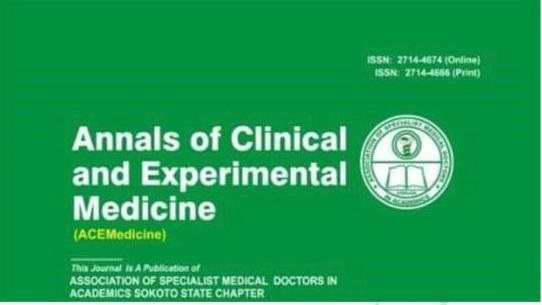 |
| Volume 2 Issue 1, June 2021 DOI:10.47838/acem.26011977.127122021.asmeda.1.6 https://acemedicine.asmeda.org |
A comparative study of Vitamin A and Zinc levels of Preschool Age Children with Malnutrition and Well-nourished children in a tertiary Health Facility in North-Western Nigeria.
Adamu A , Jiya NM , Ahmed H , Ali M , Isezuo KO , Ango UM , Jiya FB , Umar MT .
|
ABSTRACT
Background: Micronutrient deciencies constitute a devastating form of malnutrition whose consequences can be crippling or fatal. In developing countries where malnutrition is prevalent, children usually have
multiple micronutrient deficiencies. There is increasing evidence that zinc and vitamin A interact in several ways. Zinc is a component of retinol binding protein (RBP), a protein necessary for transporting vitamin A
in the blood.
Objective: To compare mean serum levels of vitamin A and zinc between preschool age children with malnutrition and age matched well-nourished children at Usmanu Danfodiyo University Teaching Hospital (UDUTH), Sokoto.
Methodology: Study was descriptive cross-sectional, carried out at the Department of Paediatrics of UDUTH, Sokoto from April 2013 to June 2014. It was conducted among 275 malnourished children aged
6 – 60 months and age matched well-nourished controls. Five mls of venous blood was taken for serum vitamin A and zinc analysis.
Result: The mean serum levels of vitamin A and zinc in children with malnutrition were 23.4±13.2μg/dl
and 13.5±3.3μmol/L respectively, which were significantly lower when compared to that of the controls 54.1±22.8μg/dl and 15.8±1.9μmol/L respectively. Mean serum vitamin A and zinc levels were significantly low across all age groups of study subjects compared to age-matched controls (p=<0.05). Lowest mean serum vitamin A level was observed among children with severe wasting (18.6±10.2μg/dl)
when compared with that of the controls (54.0±22.8 μg/dl): the difference was signicant (p=0.0001). Similarly, the lowest mean serum zinc level was observed among children with oedematous malnutrition
(12.8±3.0μmol/L) when compared to that of the controls (15.8±1.9μmol/L): the difference was also
significant (p=0.0001).
Conclusion: Children with malnutrition had significantly lower mean serum vitamin A and zinc levels, especially among children aged 2 to 3 years. For effective management of children with malnutrition, vitamin A
and zinc supplementation should be part of the treatment.
|
|
|